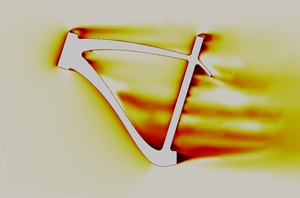Sports & Leisure Industry
Sports & Leisure Industry will continue to grow over the next century. Nowadays, professional sports athletes as well as amateurs wish constantly to improve its athletic performance. CFD tools can help leisure sports equipment designers and manufacturers to offer cutting-edge technological products, to speed up the product development cycle and reduce the time-to-market.
Nowadays Motor Sports Industries have become major users of CFD tools. Some Formula One and Power Boat Teams have built large clusters to harness the power of CFD calculations. Costs of such hardware configurations are relatively cheap compared to the construction of new wind tunnel facilities.
Over the last 20 years Sailing Teams involved in the America's Cup or Volvo Ocean Race have taken advantage of the benefits of CFD simulations to build sailboats (hull, keel, bulb, rudder, mast and sails) at the forefront of technology.
CFD has enhanced the level of performance in many sports competitions including canoeing, kayaking, sailing, rowing, bobsleigh, ski jumping, ski racing, bike and wheelchair racing. With the use of CFD, swimsuit manufacturers were able to reduce the passive drag of their suits.
leisure equipment are designed using CFD softwares, including a vast range of balls. Furthermore athlete positions (bike racing, ski jumping, speed skiing) can be optimised in a “virtual wind tunnel” at a fraction of the cost of experimental “real wind tunnel” testings.
Dr. Keith Hanna wrote a paper which shows how CFD and other computer-aided engineering tools are widely used in the Sports & Leisure Industry.
-

Racing Bike
From the frames to the helmets to the tires to the wheels, the bike’s design plays an important role in helping the amateurial, professional cyclists and triathletes to compete successfully.
